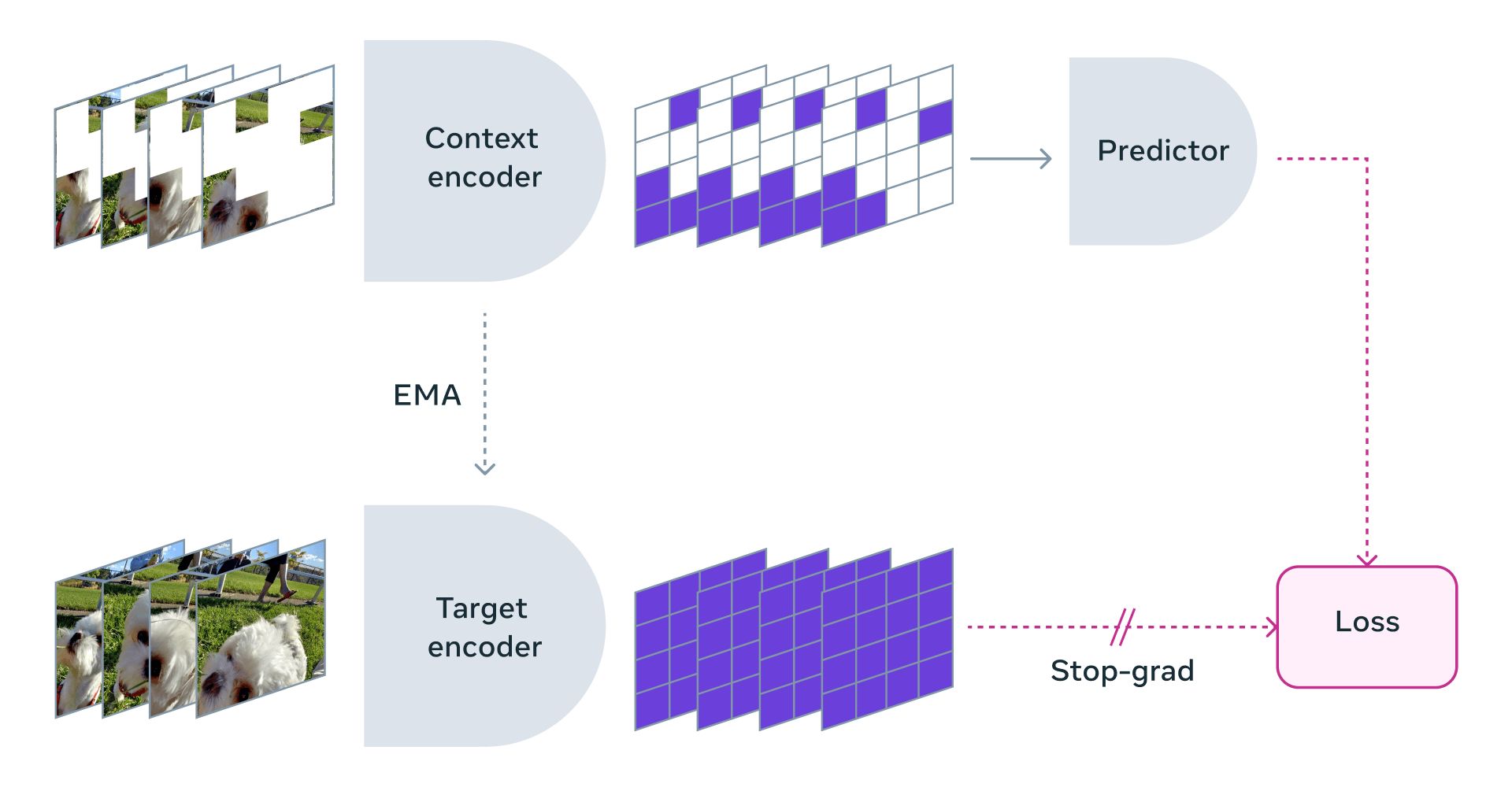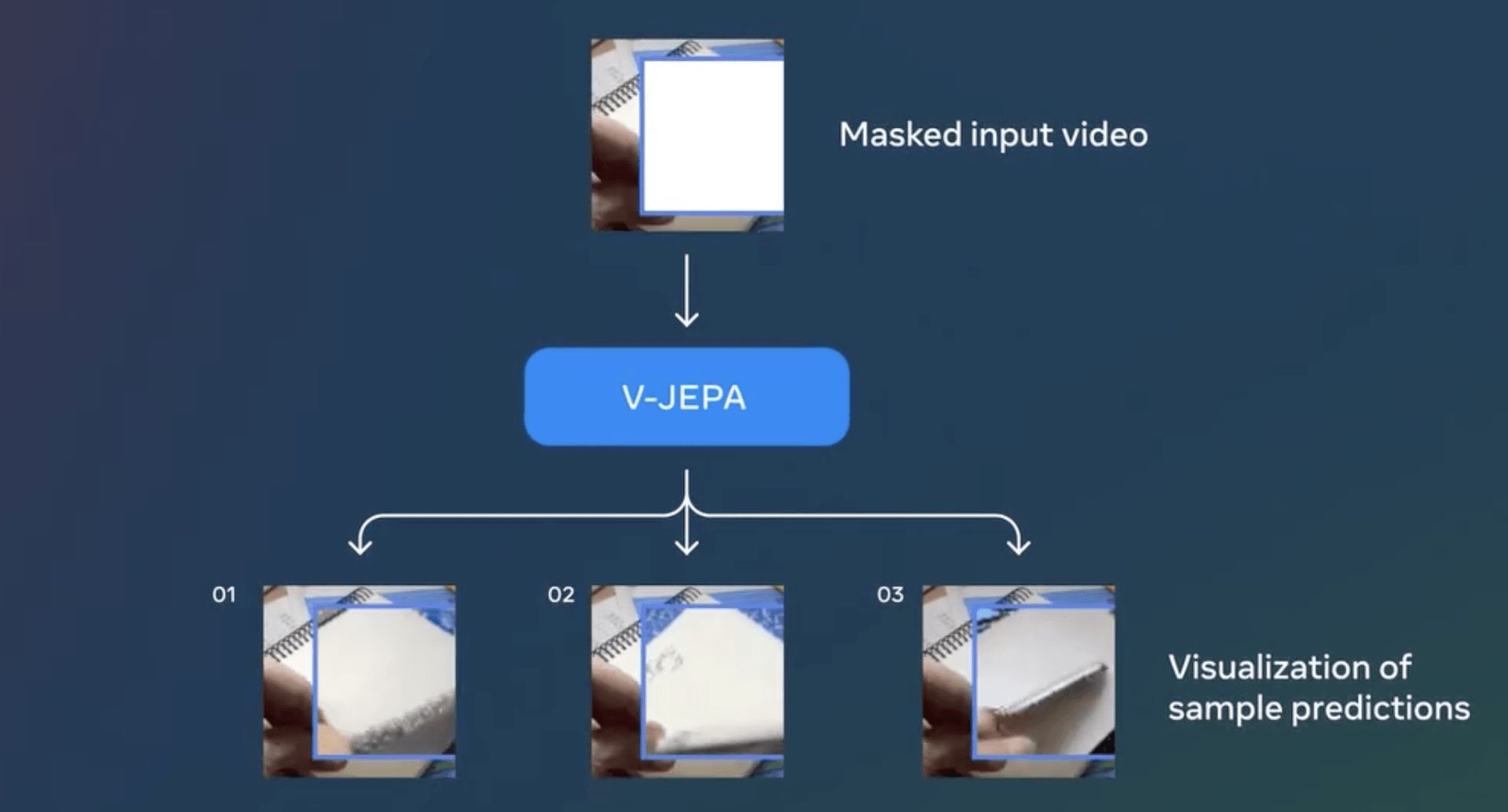Meta AI researchers have made an exciting breakthrough in the world of artificial intelligence: the Video Joint Embedding Predictive Architecture (V-JEPA) model. The new model can potentially revolutionize how AI models work by learning from videos instead of words.
What makes V-JEPA different?
Large language models used today are trained on massive text datasets to learn the relationships between words and grammatical rules. While these models are successful in many tasks, they still have limitations in understanding the visual world. V-JEPA aims to overcome this problem by learning from videos.
How does it work?
V-JEPA uses a “masking” technique to identify objects and events in videos. In this technique, a random video portion is masked, and the model is asked to fill in the blank. The model accomplishes this task by analyzing the temporal sequence of objects and events and their relationships.

Advantages of V-JEPA
V-JEPA’s video-based learning approach offers several key advantages:
- Faster learning: The masking technique allows the model to learn from videos faster and more efficiently.
- Better visual perception: By learning from videos, the model can better recognize objects and events and understand their relationships.
- Generalized learning: The model can apply the knowledge it learns from videos to new and different situations.

Potential applications of V-JEPA
V-JEPA can enable the use of artificial intelligence in many different areas:
- Visual object recognition: The model can recognize objects and events in real-time from camera footage.
- Autonomous vehicles: The model can help autonomous vehicles navigate safely by detecting other vehicles and pedestrians in traffic.
- Medical imaging: The model can assist doctors in diagnosing by detecting abnormalities in medical images such as X-rays and MRIs.
Meta‘s new model is a significant step in developing the ability of AI models to understand the visual world. This model is expected to be used in many different areas in the future and make our lives easier.
Featured image credit: AndersonPiza / Envato

